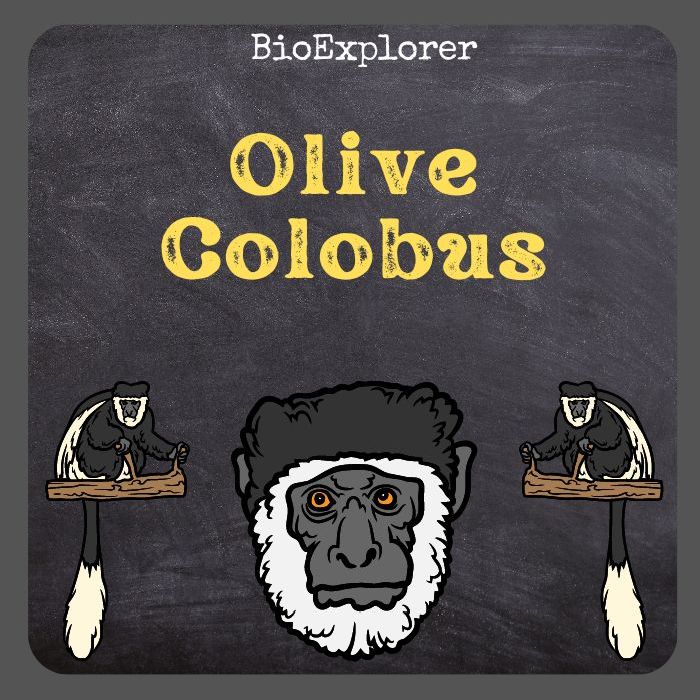
| Animalia | Primates | Cercopithecidae | Procolobus | Procolobus verus |

- Common Name: Olive Colobus
- Taxonomy Classification Year: 1838
- Monkey Size: 9 to 43 cm (3.54 to 16.93 in)
- Skin Color(s): Olive
- Habitat: Rainforest
- Diet: Herbivorous
- Native Countries: Sierra Leone, Niger, Nigeria
Olive Colobus Distribution
Olive Colobus Characteristics
The olive colobus[1] (Procolobus verus), also called the Van Beneden’s colobus or green colobus is a primate species in the Cercopithecidae family.
- Its name in English refers to its opaque olive-colored upper parts.
- The smallest and darkest of all African colobus monkeys, Procolobus verus, sports olive fur with a brown tint on top and grayish underparts.
- Weights vary from 2 to 4.5 kg, and body lengths of 9 to 43 cm are reported.
- Olive colobus monkeys have a body structure similar to black and white colobus monkeys. Still, olive colobus monkeys have a small crest on their heads and the smallest thumbs and largest feet of any colobus.
- Males are the same size as females, with relatively larger canines than females.
What Do Olive Colobus Eat?
The Olive Colobus feeds on[¶]:
- Raphia Palm (Raphia africana).
- Persimmons (Diospyros)
- African Locust-Bean (Parkia bicolor).
- Boleko Nut (Ongokea gore).
- African Nutmeg (Pycnanthus angolensis).
- Velvet Tamarind (Dialium guineense).
- Lagos Silkrubbertree (Funtumia africana).
- Sasswood (Erythrophleum)
What Eats Olive Colobus?

Chimpanzees (Pan troglodytes), Crowned eagles (Stephanoaetus coronatus), Leopards (Panthera pardus) and Humans (Homo sapiens) are the primary predators of Olive Colobus monkeys[§].
Olive Colobus Facts
- It is the smallest specimen of all the Colobine monkeys. It is rarely seen in its natural habitat due to its secretive nature and cryptic coloration.
- Olive colobus monkeys are found in small groups containing multiple breeding males, multiple females, and their young.
- The close association with Diana monkeys not only serves to avoid predators but is also a mechanism used by male olive colobus monkeys to obtain new female mates.
- The mating system of the olive colobus is unique in that, unlike many species that live in small groups, there is no evidence of the monopolization of females by males.
- The olive colobus monkey is highly vulnerable to habitat loss due to increased encroachment by farmers and hunters into protected and unprotected areas.
Suggested Reading: All Monkey Species
The Eagle Species List features apex predators like the Crowned Eagle, capable of hunting Olive colobus monkeys.
Cite This Page
APA7MLA8Chicago
BioExplorer.net. (2025, May 27). Olive Colobus. Bio Explorer. https://www.bioexplorer.net/animals/mammals/monkeys/olive-colobus/.
BioExplorer.net. "Olive Colobus" Bio Explorer, 27 May 2025, https://www.bioexplorer.net/animals/mammals/monkeys/olive-colobus/.
BioExplorer.net. "Olive Colobus" Bio Explorer, May 27 2025. https://www.bioexplorer.net/animals/mammals/monkeys/olive-colobus/.







